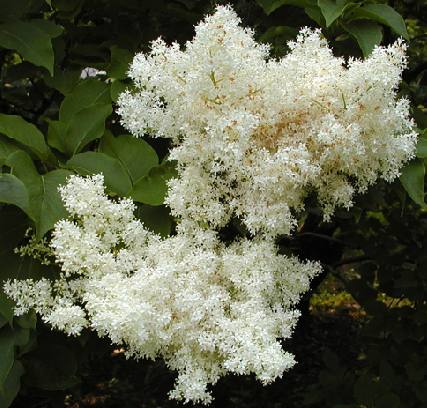
Japanese Tree Lilac
Japanese Lilac (Syringa reticulate)
The Japanese Lilac is a small deciduous tree growing to a height of 18 feet and is the largest species of lilac, originally native to the Far East. It is also the only member of the species that regularly makes a small tree rather than a shrub. This makes it doubly valuable in a relatively small area such as the Conservatory Garden. It not only serves as an ornamental tree, but the blossoms far outlast almost any flowering shrub in the garden.
The Japanese Lilac grows vigorously in an urban landscape, blooms lavishly in mid summer, producing panicles of creamy white flowers (the “reticulate” part of its name refers to the net-like array of its flowers). After blooming it develops decorative gold seed capsules that it holds until mid winter. The bark also contributes to its overall beauty—quite similar to cherry bark and very shiny. In the Conservatory Garden it serves as the perfect counterpoint to the French Lilac and its bright purple flowers.
The Japanese Lilac is also one of the most fragrant blossoms in the garden, with its sweet aroma lingering in the air through the warmth of the early summer months. The variety grown here in Central Park is the very popular “Ivory Silk” cultivar which thrives in all kinds of soils and is extremely hardy. This is certainly a visitor from a far off land that has made a spectacular new home, here in New York.
 Conservatory Garden
Conservatory Garden
One of the hidden wonders of Central Park is the Conservatory Garden at Fifth Avenue and 105th St. A secluded oasis, just a few steps down from one of the City’s busiest thoroughfares; the garden offers a fragrant respite from the gasp and clatter of the urban afternoon.


 Conservatory Garden
Conservatory Garden